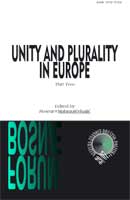THE SOURCES OF ARABIAN FOLK TALES IN THE BELIEFS AND THE IDENTITIES OF THREE MUSLIM PEOPLES IN EASTERN EUROPE
THE SOURCES OF ARABIAN FOLK TALES IN THE BELIEFS AND THE IDENTITIES OF THREE MUSLIM PEOPLES IN EASTERN EUROPE
Author(s): Harry Thirlwall NorrisSubject(s): Anthropology
Published by: Međunarodni forum Bosna
Summary/Abstract: THE CIRCASSIANS, THE ALBANIANS (SHQIPTARS) AND THE BULGARIANS OF VOLGA BULGHAR The subject of this paper is to introduce, analyse and assess the significance of three medieval ‘Yemenite’ stories, both oral and literary, which have been borrowed and adapted to explain the origin of three Muslim peoples in medieval and post-medieval Eastern Europe; the Circassians, the Albanians (Shqiptars, or Arna’uts) around the city of Elbasan, and the Muslim inhabitants of the city of Bulghar, near Kazan, on the Volga. The Yemenites, who are introduced, vary in two respects. One tribal group were said to have been the Ghassanids, who allegedly emigrated to the area of Golan, in Syria, following the destruction of the Ma’rib dam, in the Yemen. The other tribal group- the Volga Bulgarianssucceeded the pagan ‘Adites, who were mentioned in the Qur’an and who were unbelievers, and a people who were to be replaced by believing Yemenites. The stories are essentially adapted from the Arabian tradition. Arab blood is a mark of honour and esteem. However, in at least two of the stories, the Quraysh are central to the claim, thus introducing the Prophetic household, and the Quraysh, into the proud lineage, the nasab and the hasab, of diverse indigenous non-Arab peoples of Eastern Europe. Before presenting my examples, I should like to draw attention to a pioneering article by my Syro-Albanian friend and colleague, Dr Muhammad Mufaku al-Arna’ut, who teaches in Al al-Bayt University, al- Mafraq, Jordan. He entitled his article ‘The Arab origin of some of the Muslim peoples in Europe – history, myth, fantasy and policy, the Circassians’(al-Usul al-‘Arabiyya li-ba‘d al-Shu‘ub al-Muslima fi Urubba – al-Ta’rikh – al-Khayal – al-Siyasa, al-Sharakisa). His article was published in the academic journal al-Manarah and it was issued by his University in Jordan, vol 2, issue 1, Dhu’l-Qa‘da, 1417 AH/1997 AD, pp 65-82. Jordan has a substantial Circassian community and so this enabled Dr Mufaku to obtain first hand comment and information from his Circassian colleagues and friends. I shall draw attention to his article later in my conclusion.
Journal: Forum Bosnae
- Issue Year: 2007
- Issue No: 39
- Page Range: 178-194
- Page Count: 17
- Language: English
- Content File-PDF

